Top 10 Most Beautiful Historical Sites in Argentina
Argentina is known for its unique wildlife and natural landscapes. When visiting Argentina, though, you can visit a variety of historical sites, all of which ... read more...are as beautiful. Though the majority of Argentina's historical sites are in Buenos Aires, the country's capital and cultural center, visitors to other regions will be awestruck by architectural marvels and fascinating stories that blend native and European history. Here are the 10 most beautiful historical sites in Argentina.
-
San Ignacio Mini was one of many missions founded by the Jesuits in 1610 in Argentina, in what colonial Spaniards called the Province of Paraguay of the Americas during the Spanish colonial period. It is located near the present-day San Ignacio valley, about 60 kilometers north of Posadas in Argentina's Misiones Province. It was one of four reductions in Argentina designated as World Heritage Sites by UNESCO in 1984.
The mission had a population of around 3000 people in the 18th century, mostly indigenous peoples. They created a plethora of cultural and handicraft products, which the Spanish commercialized through trade along the nearby Paraná River. The Jesuits left the mission a year after the Society of Jesus was suppressed in 1767. In the war against the Banda Oriental independence movement, Luso-Brazilian forces destroyed the mission, as well as other missions in the area, in 1817.
The ruins are among the best-preserved of those built on the territory of the Province of Paraguay, which is now shared by Argentina, Brazil, and Paraguay. It is one of the most visited due to its accessibility. It gained popularity following poet Leopoldo Lugones' 1903 expedition to the site. Until 1940, the government did not conduct formal exploration and restoration.
The church, a cabildo, a cemetery, a monastery, and some houses originally surrounded the main square. The magnificent 74-meter-long and 24-meter-wide church was designed by Italian priest Juan Brasanelli and built with local red sandstone. The walls are about 2 meters wide, which, despite the fragile material, has allowed the structures to stand for over two centuries.
Location: San Ignacio, Misiones Province, Argentina
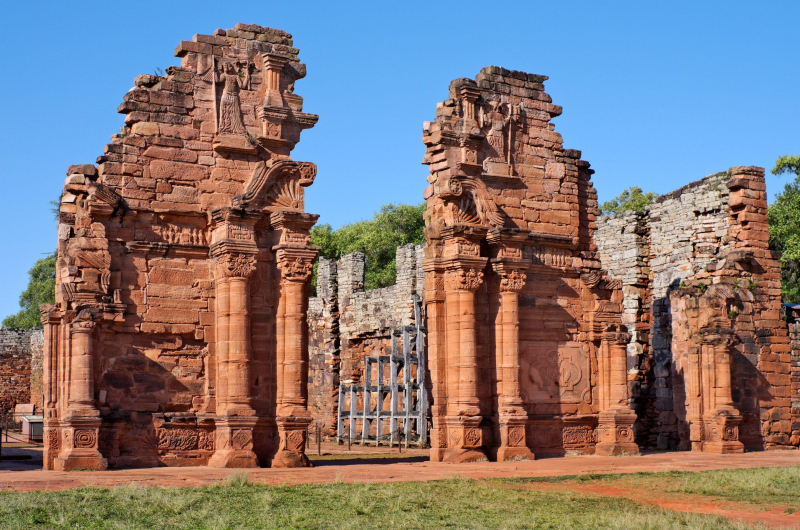
Photo: lonelyplanet.com Video: UNESCO -
La Recoleta Cemetery is a cemetery in Buenos Aires, Argentina, located in the Recoleta neighborhood. It is home to the graves of notable people such as Eva Perón, Argentina's presidents, Nobel Prize winners, the founder of the Argentine Navy, and military commanders such as Julio Argentino Roca. The BBC named it one of the world's best cemeteries in 2011, and CNN named it one of the top ten most beautiful cemeteries in the world in 2013.
In the early eighteenth century, Franciscan Recollect monks arrived in this area, which was then on the outskirts of Buenos Aires. The cemetery is built around the Recollect Convent, and Our Lady of Pilar Church was constructed in 1732. The order was disbanded in 1822, and the convent's garden was converted into the city's first public cemetery. The cemetery was inaugurated on November 17, the same year, under the name Cementerio del Norte, by then Governor Martin Rodriguez, who would eventually be buried there, and government minister Bernardino Rivadavia.
Próspero Catelin, a French civil engineer who also designed the current facade of the Buenos Aires Metropolitan Cathedral, designed the 1822 layout. The cemetery was last renovated by the Italian architect Juan Antonio Buschiazzo in 1881, while Torcuato de Alvear was mayor.
Set on 5.5 hectares (14 acres), the site contains 4691 vaults, all above ground, 94 of which have been designated by the Argentine government as National Historical Monuments and are protected by the state. The cemetery is entered through neoclassical gates with tall Doric columns. The cemetery contains many elaborate marble mausoleums decorated with statues in a variety of architectural styles such as Art Deco, Art Nouveau, Baroque, and Neo-Gothic, and the majority of materials used in the construction of tombs between 1880 and 1930 were imported from Paris and Milan. The cemetery is divided into sections that resemble city blocks, with wide tree-lined main walkways branching into sidewalks lined with mausoleums.
Location: Junín 1760, Buenos Aires, Argentina
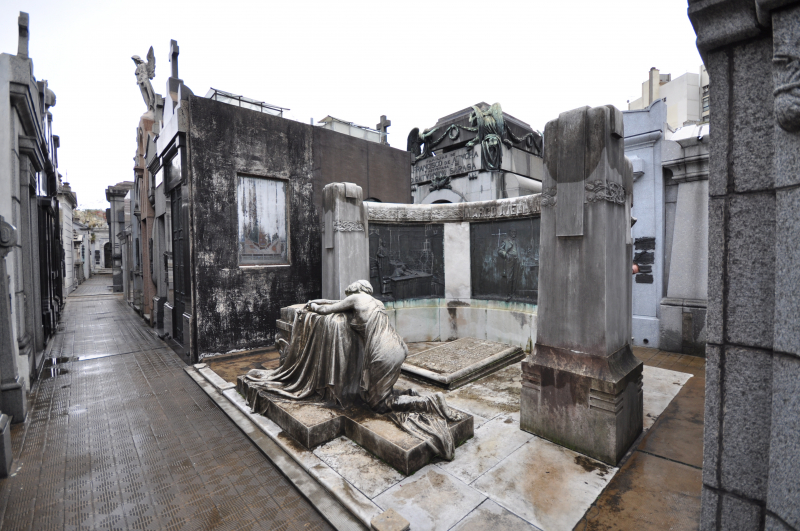
Photo: commons.wikimedia.org Video: David Owens -
The Plaza de Mayo is a city square in Buenos Aires, Argentina, and the city's main foundational site. After the demolition of the Recova building in 1884, it united the city's Plaza Mayor and Plaza de Armas, which were then known as Plaza de la Victoria and Plaza 25 de Mayo, respectively.
The Plaza de Mayo in Buenos Aires has witnessed some of the most significant events in Argentine history, as well as some of the country's largest popular demonstrations. The Pirámide de Mayo was inaugurated in the square's hub on the first anniversary of the May Revolution in 1811, becoming Buenos Aires' first national monument.
It is situated in the Monserrat barrio's financial district known as microcentro. As one of the most beautiful historical sites in Argentina, It is bounded by the streets Bolvar, Hipólito Yrigoyen, Balcarce, and Avenida Rivadavia, and three important avenues emerge from its west side: Avenida Presidente Julio Argentino Roca, Avenida Roque Sáenz Pea, and Avenida de Mayo.
Several significant monuments and points of interest surround the square, including the Cabildo, the Casa Rosada (the President of Argentina's seat), the Metropolitan Cathedral, the Buenos Aires City Hall, and the headquarters of the Bank of the Argentine Nation. The Underground stations of Plaza de Mayo (Line A), Catedral (Line D), and Bolvar (Line E) are located beneath its grounds (Line E).
Location: Monserrat, Buenos Aires, Argentina
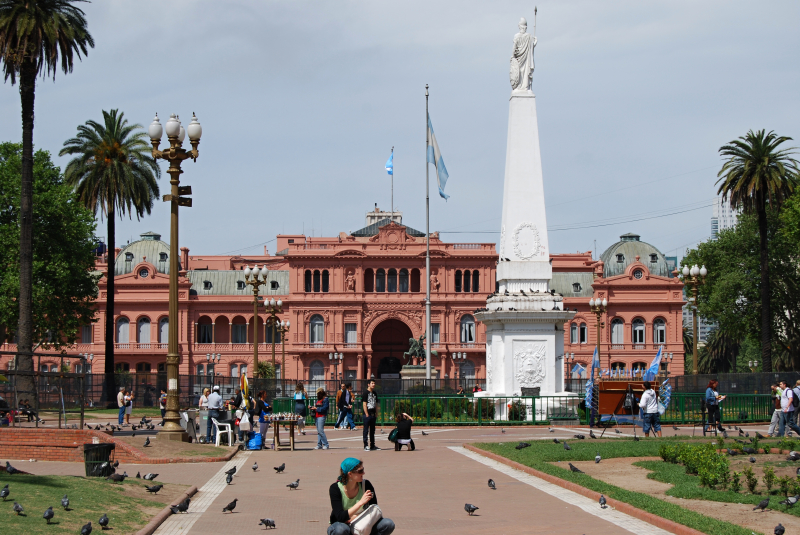
Photo: commons.wikimedia.org Video: 4K WALK -
Reduction of Our Lady of Laurel, founded in 1610, was one of the first reduction established in the Americas by the Jesuits in the Province of Paraguay during the Spanish colonial period. The site is in Argentina's Misiones Province's Candelaria Department.
The Jesuits studied Indian languages and devised methods for writing them in the Roman alphabet. At this mission, they established a printing press, which became well-known. The Jesuits not only printed works in Spanish and Latin (the languages of the Catholic liturgy, Bible, and prayer book), but they also translated the Bible and other Christian works into Indian languages and published dictionaries.
Father Antonio Garriga was a Spanish Jesuit who was attached to Nuestra Señora de Loreto from the late 17th century until the early 18th century. He was best known as a linguist and Moro missionary; he worked in the region beginning in 1696 and served as Superior of the Mission several times. His book, Practical Instruction to Order One's Life According to Saintly Precepts, was the mission's second oldest book printed. A Filipino built a ship named after the reduction in Baja California in 1760.
Only the ruins of the Jesuit reduction remain on the site now. UNESCO listed it as a World Heritage Site in 1984, together with San Ignacio Mini, Nuestra Señora de Santa Ana, and anta María la Mayor in Argentina, and São Miguel das Missões in Brazil. UNESCO designated two missions of the Province of Paraguay, located in modern-day Paraguay, as World Heritage Sites in 1993.
Location: Misiones Province, Argentina
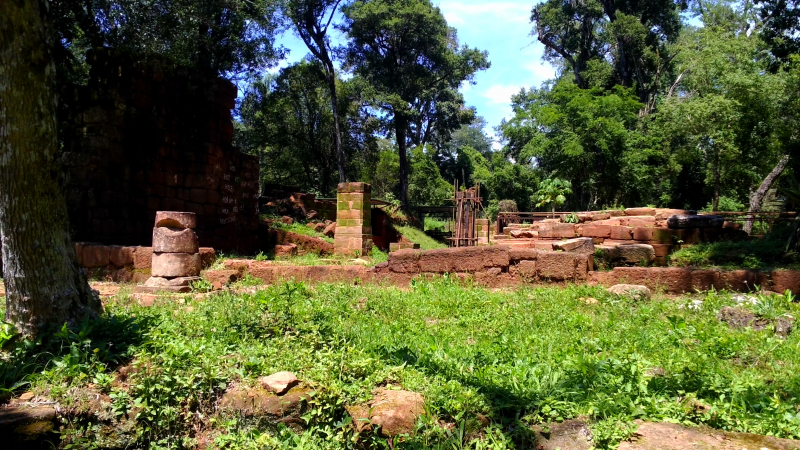
Photo: en.wikipedia.org Video: Télam -
The Casa Rosada is Argentina's presidential residence. Officially, the opulent residence is known as Casa de Gobierno ("House of Government" or "Government House"). Normally, the president lives at the Quinta de Olivos, Argentina's official presidential home in Olivos, Greater Buenos Aires. The Casa Rosada's signature color is baby pink, and it is regarded as one of Buenos Aires' most iconic structures. The structure also houses a museum with items related to Argentina's prior presidents. It has been designated as an Argentina National Historic Monument.
During Cristina Kirchner's presidency, the presidential helicopter was frequently seen flying above the city, transporting her from the Casa Rosada to the Quinta de Olivos. Only one president has lived in the Casa Rosada, Roque Sáenz Pea, who stayed there between 1910 and 1914.
As one of the most beautiful historical sites in Argentina, the Casa Rosada appears to be a consistent structure, but it is actually the product of an amalgamation of various older buildings built on the site throughout the years. In the late 1500s, what is now the Plaza de Mayo was deemed the city's origin site, and a fort was built where the Casa Rosada currently sits. A British architect created the Customs House to the rear of the fort in the mid-1800s, and the Post Office was built in the late 1800s on the site where the fort's ancient walls had been removed. These structures were finally merged into the Casa Rosada at the end of the nineteenth century.
A monument to Christopher Columbus had formerly stood at the back of the Casa Rosada, but Cristina Kirchner replaced it near the end of her tenure with a statue of a Bolivian independence warrior, Juana Azurduy, a gift from Bolivian President Evo Morales in 2015. The replacing of the Columbus statue with a female Bolivian guerilla is a statement about Latin America's past and present.
Location: Balcarce 50, Buenos Aires, Argentina
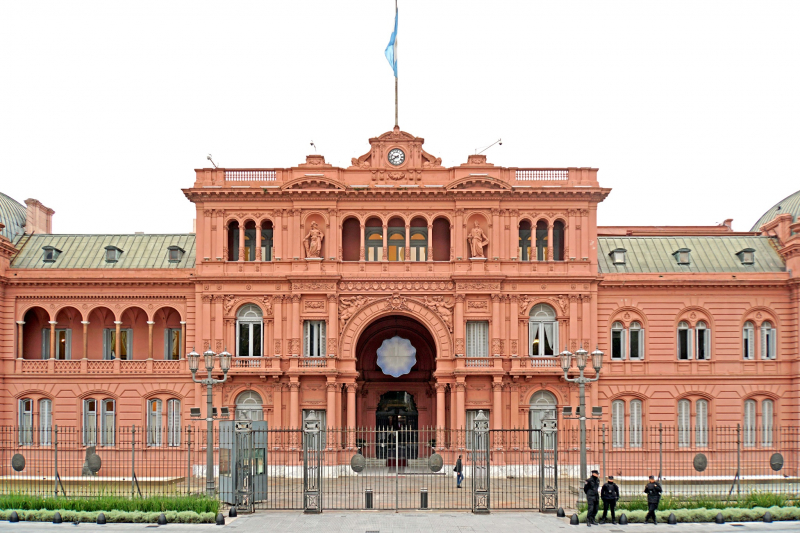
Photo: outdooractive.com Video: Travel And Discover -
The Metropolitan Cathedral of Buenos Aires is the city's main Catholic church. It is located in the San Nicolás district, on the corner of San Martn and Rivadavia streets, facing Plaza de Mayo.
Since its humble beginnings in the 16th century, the Metropolitan Cathedral of Buenos Aires has been restored multiple times. With an 18th-century nave and dome and a severe 19th-century Neoclassical façade without towers, the current structure is a combination of architectural styles. The interior houses valuable 18th-century statues and altarpieces, as well as Neo-Renaissance and Neo-Baroque ornamentation.
The Metropolitan Cathedral, which faces the Plaza de Mayo, is the Catholic Church's principal location in Argentina and is where Pope Francis used to perform mass as Archbishop Jorge Bergoglio before entering office in the Vatican in 2013. The Pope Francis Museum, which houses some of Bergoglio's personal and liturgical objects, is now housed in the Cathedral in his honor.
The front wall of the Cathedral is embellished with religious symbolism and a votive light whose permanent flame honors the liberator General Jose de San Martin and the Unknown Soldier during the American Revolutionary War.
The interior of the Cathedral is decorated in neo-Romanesque and neo-Baroque styles, with five naves and a transept topped by a 41-meter high vault. Its floors are covered in Venetian mosaics depicting numerous religious symbols, such as the passionflower, or "mburucuyá" in Guarana, which represents Christ's Passion.
Begin on the right side of the nave. The mausoleum of San Martin and the Unknown Soldier can be found as you pass the third church. French sculptor Louis-Robert Carrier-Belleuse created this marble pantheon. Three female sculptures symbolizing Argentina, Chile, and Peru surround the coffin, recalling the countries liberated by General San Martin. The grenadiers at the tomb's entrance keep vigil and pay honor to their institution's founder.
Location: Buenos Aires, Argentina
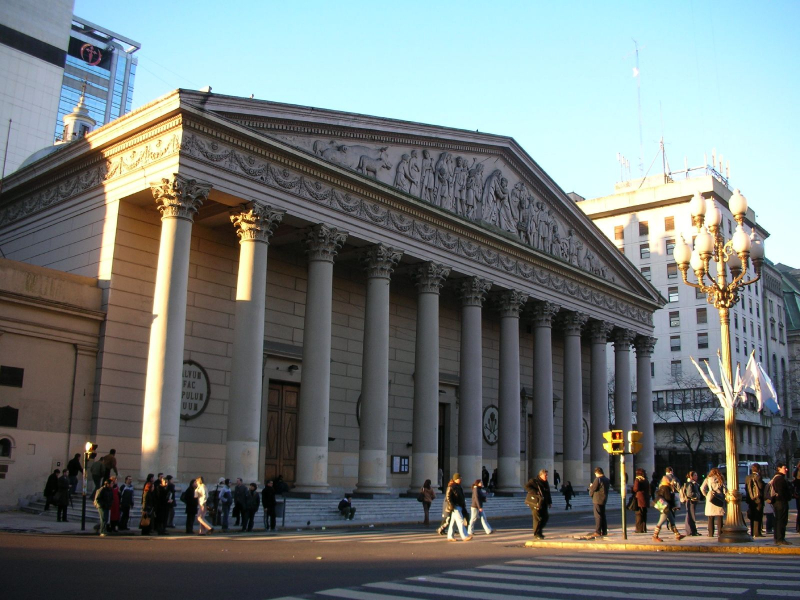
Photo: en.wikipedia.org Video: JOEJOURNEYS -
The Basilica de Nuestra Senora Del Pilar was built in a colonial style with a square tower and a dome in 1732. It has a central nave that leads to two chapels on the inside. It is located in Buenos Aires, Argentina, across from the Recoleta Cemetery.
In 1716, Felipe V of Spain issued a royal edict authorizing the construction of the church. The work was sponsored by merchant Juan de Narbona on the condition that the church is dedicated to the Virgin of Pilar in memory of and tribute to his homeland of Zaragoza, Spain.
The project's original architect is thought to have been Italian Jesuit Andrés Bianchi. The first cloister was completed in 1718, and the second cloister was completed in 1721. The church was finished in 1725, and the San Antonio de Padua bell was installed in the belfry in 1731. On October 12, 1732, the 30-meter tower was completed, and the chapel was dedicated. It is the city's oldest church, still standing in its original Baroque design. On May 30, 1734, the Franciscan Bishop of Asunción de Paraguay consecrated the church.
The Recollect friars were banished and their property was expropriated by Governor Martin Rodrguez and his Minister of Government Bernardino Rivadavia in 1821. For many years, the convent was closed, and the Recoleta Cemetery was built on the site of the monastery's garden. Other monastic dependencies were demolished to make way for the Recoleta Cultural Centre. It became a parish on November 18, 1829, and Pope Pius XI elevated it to the status of a minor basilica in 1936.
In 1942, the Basilica de Nuestra Senora Del Pilar was designated as a National Historic Monument. The church's restoration project began in 1994, with the goal of restoring the white hue on its façade as well as enhancing each altar.
Location: Buenos Aires, Argentina
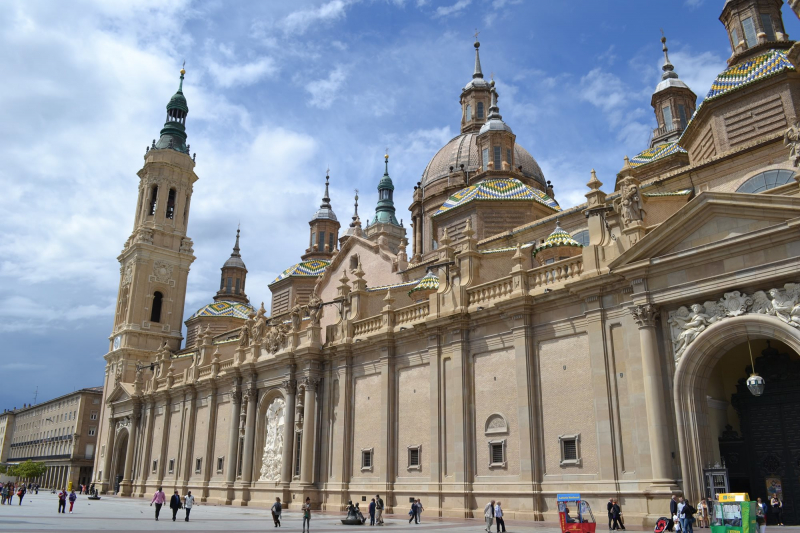
Photo: inspain.org Video: P. José de Jesús Aguilar Valdés -
The Welsh Regional Historical Museum in Y Gaiman, Patagonia, covers the tale of the 19th-century Welsh colonization in this region. Y Gaiman is a small hamlet in the Chubut Valley that was settled by Welsh people, and the two native languages are still Welsh and Spanish. David Roberts, a Welsh emigrant, founded the town in 1874. In 1865, the first Welsh settlers came, many of whom moved to safeguard their language and culture from extinction.
Welsh was heavily suppressed during and after the Peron years, but it is presently making a comeback. The town is an important component of Patagonia, a Welsh colony also known as Y Wladfa Gymreig. The Welsh Regional Historical Museum is housed in the former station house and houses numerous meticulously preserved settlement antiquities like "Y ty Cyntaf" or "The First House." It highlights the narrative of the region's initial settlers and delves into the history of the Welsh community. The museum, which was founded in 1960, also has a larger collection of information regarding the region's economy and politics.
The school, which proudly exhibits a desk provided by Lloyd George on an official visit, and the graveyard, which is a fantastic source of stories and history, are two other places to visit in Gaiman. At the National Eisteddfod in Wales, groups from the nearby town of Trelew, Gaiman, and the Welsh settlements in the Andes are frequently seen, and Trelew hosts the massive annual Eisteddfod festival, where Welsh traditional tunes are sometimes sung to South American rhythms, which is a fantastic experience to witness.
Location: Trevelin, Argentina
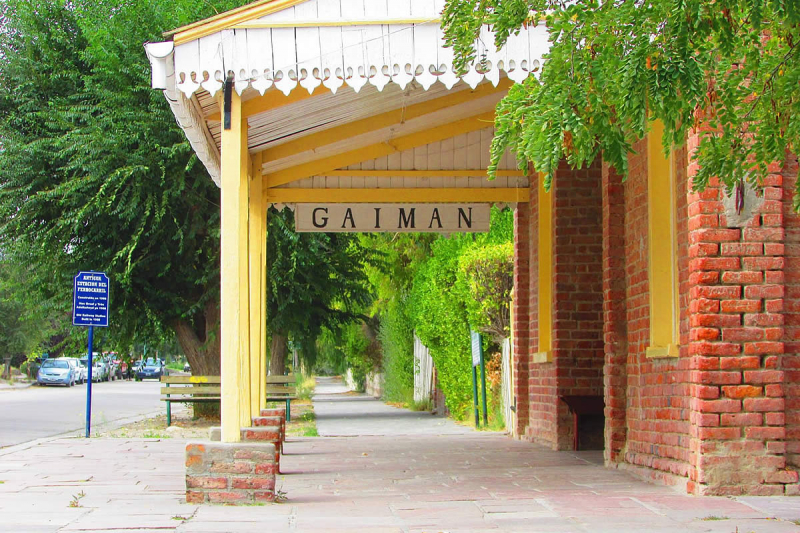
Photo: interpatagonia.com Video: AP Archive -
The Cathedral of Córdoba, one of the most beautiful historical sites in Argentina, is the most important church in the Roman Catholic Archdiocese of Córdoba, Argentina, and the country's oldest continuously operating church.
The Iglesia de Nuestra Senora de la Asunción, the original church, began construction in 1582. Architect Nicolás de Dios, public works director Gregorio Ferreira, and master mason Juan Rodríguez organized the early works, which utilized largely indigenous artisans and laborers.
The cupola, created by Franciscan Friar Vicente Muñoz, the Spanish Baroque façade, and the Neoclassical portico, all designed by Italian architect Andrea Blanqui in 1729, was also added (who would design a number of other churches in what today is Argentina). Bishop José Antonio de San Alberto consecrated the cathedral in 1784, and the twin campaniles were completed in 1787. The Santa Catalina Promenade separates the cathedral from the Córdoba Cabildo (colonial town hall, inaugurated in 1786).
The cathedral's narthex and surrounding crypts would be the final resting place for a number of notable personalities from Córdoba Province's and national history. General José María Paz, Dean Gregorio Funes, Bishop Hernando de Trejo y Sanabria, and Friar Mamerto Esquiú are only a few of them.
The magnificent interior features a church tabernacle donated to the cathedral in 1804, as well as an impressive collection of silver and gold votive offerings, all of which are overlooked by the sterling silver altar made in Colonial Peru. Emilio Caraffa, Carlos Camilloni, and Manuel Cardeñosa painted frescoes and murals for the interior in the early twentieth century, and a cast-iron monument, Cristo Redentor, was put above the portico in 1901.
Location: Córdoba, Argentina
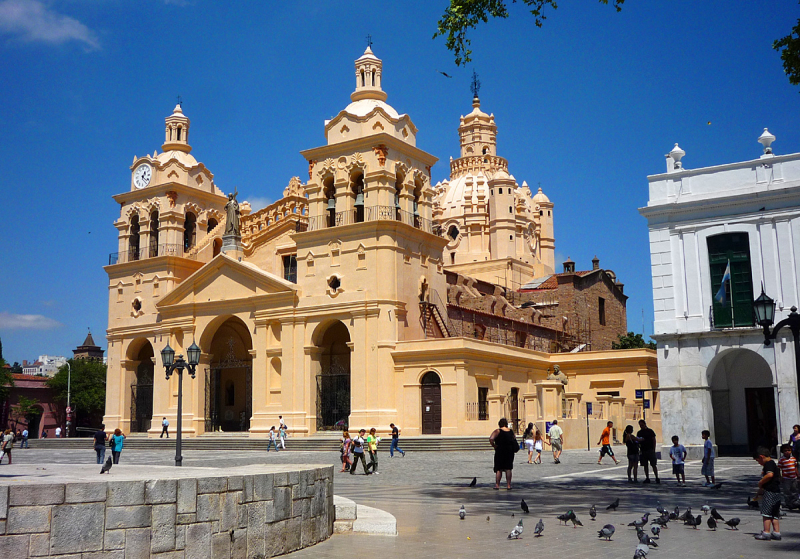
Photo: commons.wikimedia.org Video: Justravellers -
The Pucará de Tilcara is a pre-Inca fortress or pukara located on a hill just outside the small town of Tilcara in the Argentine state of Jujuy (about a 15-minute walk). The location was chosen to be easily defendable and to afford good views over the Quebrada de Humahuaca for a lengthy stretch.
In the year 2000, the Pucará de Tilcara was designated as a National Monument. It is the only publicly accessible archaeological site in the Quebrada de Humahuaca and has been largely reconstructed.
Human settlement in the area can be traced back over 10,000 years. The Omaguaca tribe, who first lived in the area about the 12th century, built the walled settlement. They were renowned warriors and experts in agriculture, weaving, and pottery. The pucará was a major administrative and military center during their reign.
The pucará encompassed around 15 acres at its peak and contained over 2,000 people who lived in small square stone structures with low doors and no windows. Aside from dwelling quarters, the pucará included animal corrals, religious ceremony areas, and burial grounds.
The Quebrada tribes were finally subdued by the Incas in the late 15th century, led by Tupac Inca Yupanqui, who used the pucará as a military stronghold and to ensure the supply of metals such as silver, zinc, and copper mine nearby. The Incan occupation of the area lasted just approximately half a century, ending with the entrance of the Spanish in 1536, who constructed Tilcara in 1586.
Location: Tilcara, Jujuy, Argentina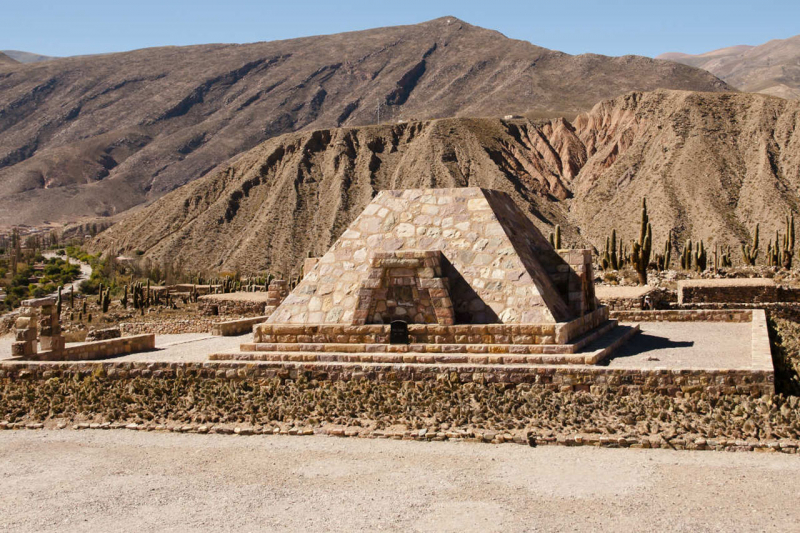
Photo: tripin.travel Video: descubri comar































